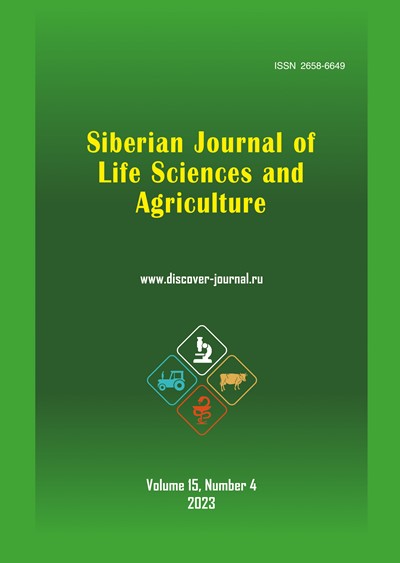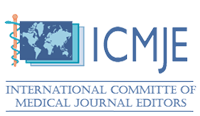ОСОБЕННОСТИ МЕТАБОЛИЗМА И ПОТЕНЦИАЛЬНАЯ РОЛЬ НЕЙРОТРОФИЧЕСКИХ ФАКТОРОВ ГОЛОВНОГО МОЗГА В РЕАБИЛИТАЦИОННОМ ПРОЦЕССЕ
Аннотация
Понимание метаболических путей регуляции и взаимодействия нейротрофических факторов важно с точки зрения обсуждения нейротрофических факторов в качестве биологических маркеров, отражающих динамику и эффективность реабилитационного процесса.
Цель работы – проанализировать особенности продукции, метаболизма, механизмов действия основных нейротрофических факторов, которые могут объяснить возможность их активного вовлечения в реабилитационный процесс пациентов с детским церебральным параличом. В статье представлен анализ литературы о метаболизме нейротрофических факторов головного мозга (фактор роста головного мозга BDNF, нейротрофины NT-3 и NT4/5, фактор роста фибробластов FGF-1 и FGF-2, фактор роста нервов NGF, инсулиноподобный фактор роста IGF1, глиальный нейротрофический фактор GDNF, цилиарный нейротрофический фактор CNTF). Приводятся сведения об особенностях их продукции, взаимосвязи между профакторами и зрелыми формами, а также о специфике взаимодействия с рецепторами. Заключение. Статистически значимое падение уровней нейротрофических факторов на фоне реабилитационной терапии детей с ДЦП с применением программно-аппаратного комплекса «НИМК – экзокисть-2» отражает активное вовлечение нейротрофических факторов в данный процесс. Спектр биологических эффектов нейтротрофических факторов позволяет рассматривать весь многокомпонентный механизм, происходящий в головном мозге в процессе функциональной перестройки, как достаточный для реабилитационного восстановления.
Скачивания
Литература
Список литературы
Батышева Т. Т., Крапивкин А. И., Царегородцев А. Д. и др. Реабилитация детей с поражением центральной нервной системы // Российский вестник перинатологии и педиатрии. 2017. T. 62, №6. С. 7-15. https://doi.org/10.21508/1027-4065-2017-62-6-7-15
Батышева Т. Т., Трепилец В. М., Климов Ю. А., Квасова О. В., Глазкова С. В. Современный взгляд на проблему детского церебрального паралича // Детская и подростковая реабилитация. 2016. Т. 2, №27. С. 5-9.
Гудашева Т.А., Поварнина П.Ю., Волкова А.А., Круглов С.В., Антипова Т.А., Середенин С.Б. Дипептидный миметик фактора роста нервов стимулирует нейрогенез и синаптогенез в гиппокампе и стриатуме взрослых крыс с фокальной церебральной ишемией // Acta Naturae (русскоязычная версия). 2019. Т.11.3 (42). С.31–37.
Коробцов А.В., Калиниченко С.Г., Матвеева Н.Ю. Характеристика нейротрофинов и их локализация в неокортексе крыс при острой экспериментальной ишемии // Вестник новых медицинских технологий. 2018. №4. С. 235–241.
Корсунская Л.Л., Ларина Н.В., Власенко С.В. Роль ростовых факторов и нейротрофического контроля в системе «мотонейрон-мышечное волокно» при детском церебральном параличе // Журнал неврологии и психиатрии. 2018. №1. С. 115-122.
Корсунская Л.Л., Савчук E.O., Ларина Н.В., Фалалеев А.П., Савчук Е.А., Убейконь Д.А., Дворниченко А.В. Эффективность применения комбинированной методики «Неинвазивный интерфейс «Мозг – Компьютер – Экзоскелет кисти» в сочетании с ноотропной терапией в реабилитации детей с детским церебральным параличом // Медицинский вестник Северного Кавказа. 2020. Т. 15, №1. С. 58-61. https://doi.org/10.14300/mnnc.2020.15012
Крыжановская С.Ю., Запара М.А., Глазачев О.С. Нейротрофины и адаптация к средовым стимулам: возможности расширения «терапевтического потенциала» (краткий обзор) // Вестник Международной Академии Наук (Русская секция). 2020. №1. C. 36-43.
Рудницкая Е.А., Колосова Н.Г., Стефанова Н.А. Физиология нейротрофическое обеспечение головного мозга в онтогенезе и при развитии нейродегенеративных заболеваний // Вестн. Моск. Ун-та. сер. 16. Биология. 2016. № 4. C. 72-82.
Aboulkassim T., Tong X.K., Tse Y.C., Wong T.P., Woo S.B., Neet K.E., Brahimi F., Hamel E., Saragovi H.U. Ligand-dependent TrkA activity in brain differentially affects spatial learning and long-term memory // Mol. Pharmacol., 2011, Vol. 80, №3, pp. 498–508.
Basilious A., Yager J., Fehlings M.G. Neurological outcomes of animal models of uterine artery ligation and relevance to human intrauterine growth restriction: A systematic review // Dev. Med. Child Neurol., 2015, Vol. 57, pp. 420–430. https://doi.org/10.1111/dmcn.12599
Bothwell M. NGF, BDNF, NT3 and NT4 // Neurotrophic factors / Eds. G.R. Lewin and B.D. Carter. Berlin: Springer, 2014, pp. 3–15.
Bothwell M. Recent advances in understanding neurotrophin signaling // F1000Res, 2016, Vol. 5. N 1885, pp. 1–9.
Ceni C., Unsain N., Zeinieh M.P., Barker P.A. Neurotrophins in the regulation of cellular survival and death // Neurotrophic factors / Eds. G.R. Lewin and B.D. Carter. Berlin: Springer, 2014, pp. 193–221.
Colombo E., Cordiglieri C., Melli G., Newcombe J., Krumbholz M., Parada L.F., Medico E., Hohlfeld R., Meinl E., Farina C. Stimulation of the neurotrophin receptor TrkB on astrocytes drives nitric oxide production and neurodegeneration // J. Exp. Med. 2012. Vol. 209. N 3, pp. 521–535.
Coupé B., Dutriez-Casteloot I., Breton C., Lefèvre F., Mairesse J., Dickes-Coopman A., Silhol M., Tapia-Arancibia L., Lesage J., Vieau D. Perinatal undernutrition modifies cell proliferation and brain-derived neurotrophic factor levels during critical time-windows for hypothalamic and hippocampal development in the male rat // J. Neuroendocrinol., 2009, Vol. 21, pp.40–48. https://doi.org/10.1111/j.1365-2826.2008.01806.x
Cuello A.C., Bruno M.A., Bell K.F. NGF-cholinergic dependency in brain aging, MCI and Alzheimer’s disease // Curr. Alzheimer Res., 2007, Vol. 4. N 4, pp. 351–358.
De Assis G. G., Gasanov E. V., de Sousa M. B.C., Kozacz A., Murawska-Cialowicz E. Brain Derived Neutrophic Factor, a Link of Aerobic Metabolism to Neuroplasticity // Journal of Physiology and Pharmacology: An Official Journal of the Polish Physiological Society (NLM (Medline), 2018, Vol. 9, pp. 823.
De la Rosa, A., Solana, E., Corpas, R. et al. Long-term exercise training improves memory in middle-aged men and modulates peripheral levels of BDNF and Cathepsin B // Scientific Reports, 2019, vol. 9 (1), pp. 1–11.
Deinhardt K., Chao M.V. Trk Receptors // Neurotrophic factors / Eds. G.R. Lewin and B.D. Carter. Berlin: Springer, 2014, pp. 103–119.
Dekkers M.P.J., Nikoletopoulou V., Barde Y.A. Death of developing neurons: New insights and implications for connectivity // J. Cell Biol., 2013, Vol. 203. N 3, pp. 385–393.
Di Liegro C.M., Schiera G., Proia P., Di Liegro I. Physical Activity and Brain Health. Genes. 2019; vol.10, pp.720.
Domínguez-Sanchéz M.A., Bustos-Cruz R.H., Velasco-Orjuela G.P., Quintero A.P. et al. Acute Effects of High Intensity, Resistance, or Combined Protocol on the Increase of Level of Neurotrophic Factors in Physically Inactive Overweight Adults: The BrainFit Study // Front. Physiol., 2018, Vol. 9, pp. 741.
Espinet C., Gonzalo H., Fleitas C., Menal M.J., Egea J. Oxidative stress and neurodegenerative diseases: a neurotrophic approach // Curr. Drug. Targets, 2015, Vol. 16. N 1, pp. 20–30.
Fielder G.C., Yang T., Razdan M., Yan Li. et al. The GDNF Family: A Role in Cancer? // Neoplasia, 2018, Vol. 20 (1), pp. 99–117.
Guo W., Li Y., Sun C. et al. Neurotrophin-4 induces myelin protein zero expression in cultured Schwann cells via the TrkB/PI3K/Akt/mTORC1 pathway // Anim. Cells Syst. (Seoul), 2017, Vol. 21, N 2, pp. 84–92.
Hess D.M., Scott M.O., Potluri S., Pitts E.V., Cisterni C., Balice-Gordon R.J. Localization of TrkC to Schwann cells and effects of neurotrophin-3 signaling at neuromuscular synapses // J. Comp. Neurol., 2007, Vol. 501. N 4, pp. 465–482.
Ishii T., Mann G.E. When and how does brain-derived neurotrophic factor activate Nrf2 in astrocytes and neurons? // Neural. Regen. Res., 2018, Vol.13, N.5, pp. 803–804.
Karege F., Schwald M., Cisse M. Postnatal developmental profile of brain-derived neurotrophic factor in rat brain platelets // Neurosci. Lett., 2002, Vol. 328, N 3, pp. 261–264.
Karpova N.N. Role of BDNF epigenetics in activitydependent neuronal plasticity // Neuroph armacology, 2014, Vol. 76, pp. 709–718.
Keefe K.M., Sheikh I.S., Smith G.M. Targeting Neurotrophins to Specific Populations of Neurons: NGF, BDNF, and NT-3 and Their Relevance for Treatment of Spinal Cord Injury // Int. J. Mol. Sci., 2017, Vol.18, N 3, pp. 548.
Kojima D., Nakamura T., Banno M., Umemoto Y., Kinoshita T., Ishida Y., Tajima F. Head-out immersion in hot water increases serum BDNF in healthy males // International Journal of Hyperthermia, 2018, Vol. 34, N.6, pp. 834–839.
Krey F. C., Stocchero B.A., Creutzberg K.C., Heberle B.A., T.S. Gantes , Xiang L., Wei W., Kluwe-Schiavon B., Viola T.W. Neurotrophic Factor Levels in Preterm Infants: A Systematic Review and Meta-Analysis Front. 2021 // Sec. Pediatric Neurology. https://doi.org/10.3389/fneur.2021.643576
Kwasniewska M., Kostka T., Jegier A. et al. Regular physical activity and cardiovascular biomarkers in prevention of atherosclerosis in men: a 25-year prospective cohort study // BMC Cardiovasc Disord. 2016, Vol. 16, pp. 65.
Levada O., Cherednichenko N. Brain-derived neurotrophic factor (BDNF): neurobiology and marker value in neuropsychiatry // Likars’ka sprava. 2015. P. 15-25.
Li X., Zhao Q., Wei W., Lin Q., Magnan C., Emami M.R., et al. The DNA modification N6-methyl-2’-deoxyadenosine (m6dA) drives activity-induced gene expression and is required for fear extinction // Nat Neurosci. 2019, Vol. 22, pp.534–44. https://doi.org/10.1038/s41593-019-0339-x
Lopresti A.L., Maker G.L., Hood S.D., Drummond P.D. A review of peripheral biomarkers in major depression: the potential of inflammatory and oxidative stress biomarkers // Prog. Neuropsychopharmacol. Biol. Psychiatry. 2014. Vol. 48, pp. 102-111. https://doi.org/10.1016/j.pnpbp.2013.09.017
Lu B., Nagappan G., Lu Y. BDNF and synaptic plasticity, cognitive function, and dysfunction // Neurotrophic factors. Eds. G.R. Lewin and B.D. Carter. Berlin: Springer, 2014. P. 223–250.
Marmigère F., Carroll P. Neurotrophin signalling and transcription programmes interactions in the development of somatosensory neurons. Neurotrophic factors. Eds. G.R. Lewin and B.D. Carter. Berlin: Springer, 2014. P. 329–353.
Menn B., Timsit S., Represa A., Mateos S., Calothy G., Lamballe F. Spatiotemporal expression of noncatalytic TrkC NC2 isoform during early and late CNS neurogenesis: a comparative study with TrkC catalytic and p75NTR receptors // Eur. J. Neurosci. 2000. Vol. 12. N 9. P. 3211–3223.
Minnone G., De Benedetti F., BracciLaudiero L. NGF and Its Receptors in the Regulation of Inflammatory Response // Int J Mol Sci. 2017. Vol. 18 (5). P. 1028.
Naghibzadeh M., Ranjbar R., Tabandeh M.R., Habibi A. Effects of Two Training Programs on Transcriptional Levels of Neurotrophins and Glial Cells Population in Hippocampus of Experimental Multiple Sclerosis // Int. J. Sports Med. 2018, Vol. 39. P. 604–612.
Nikoletopoulou V., Lickert H., Frade J.M., Rencurel C., Giallonardo P., Zhang L., Bibel M., Barde Y.A. Neurotrophin receptors TrkA and TrkC cause neuronal death whereas TrkB does not // Nature. 2010. Vol. 467. N 7311. P. 59–63.
Ninomiya M., Numakawa T., Adachi N., Furuta M., Chiba S., Richards M., Shibata S., Kunugi H. Cortical neurons from intrauterine growth retardation rats exhibit lower response to neurotrophin BDNF // Neurosci. Lett. 2010. Vol. 476. P. 104–109. https://doi.org/10.1016/j.neulet.2010.03.082.
Pascual-Mancho J., Pintado-Recarte P., C. Morales-Camino J., Romero-Román C., Hernández-Martin C., Bravo C., Bujan J., Alvarez-Mon M., Ortega M.A., León-Luis J.D. Brain-Derived Neurotrophic Factor Levels in Cord Blood from Growth Restricted Fetuses with Doppler Alteration Compared to Adequate for Gestational Age Fetuses // Medicina (Kaunas), 2022, Vol. 58, N 2, pp.178. https://doi.org/10.3390/medicina58020178
Pinho R. A., Aguiar A. S., Radák Z. Effects of resistance exercise on cerebral redox regulation and cognition: An interplay between muscle and brain // Antioxidants. 2019. Vol. 8 (11). P. 529.
Porcher C., Hatchett C., Longbottom R.E., McAinch K., Sihra T.S., Moss S.J., Thomson A.M., Jovanovic J.N. Positive feedback regulation between γ-aminobutyric acid type A (GABAA) receptor signaling and brain-derived neurotrophic factor (BDNF) release in developing neurons // J. Biol. Chem. 2011. Vol. 286. N 24. P. 21667–21677.
Puglielli L. Aging of the brain, neurotrophin signaling, and Alzheimer’s disease: is IGF1-R the common culprit? // Neurobiol. Aging. 2008. Vol. 29. N 6. P. 795–811.
Quartu M., Serra M.P., Manca A., Follesa P., Ambu R., Del Fiacco M. High affinity neurotrophin receptors in the human pre-term newborn, infant, and adult cerebellum // Int. J. Dev. Neurosci. 2003. Vol. 21. N 6. P. 309–320.
Rafieva L.M., Gasanov E.V. Neurotrophin propeptides: biological functions and molecular mechanisms // Curr. Protein Pept. Sci. 2016. Vol. 17. N 4. P. 298–305.
Sampaio TB, Savall AS, Gutierrez MEZ, Pinton S. Neurotrophic factors in Alzheimer’s and Parkinson’s diseases: implications for pathogenesis and therapy // Neural Regen Res. 2017. Vol. 12. Pp.549–557. https://doi.org/10.4103/1673-5374.205084
Walsh J.J., D’Angiulli A., Cameron J.D. et al. Changes in the Brain-Derived Neurotrophic Factor Are Associated with Improvements in Diabetes Risk Factors after Exercise Training in Adolescents with Obesity: The HEARTY Randomized Controlled Trial // Neural Plast. 2018. 7169583.
References
Batysheva T. T., Krapivkin A. I., Tsaregorodtsev A. D. et al. Reabilitaciya detej s porazheniem central’noj nervnoj sistemy [Rehabilitation of children with lesions of the central nervous system]. Rossijskij vestnik perinatologii i pediatrii [Russian Bulletin of Perinatology and Pediatrics], 2017, vol. 62, no. 6, pp. 7-15. https://doi.org/10.21508/1027-4065-2017-62-6-7-15.
Batysheva T. T., Trepilets V. M., Klimov Yu. A., Kvasova O. V., Glazkova S. V. Sovremennyj vzglyad na problemu detskogo cerebral’nogo paralicha [A modern view on the problem of cerebral palsy]. Detskaya i podrostkovaya reabilitaciya [Child and adolescent rehabilitation], 2016, vol. 2, no. 27, pp. 5-9.
Gudasheva T.A., Povarnina P.Yu., Volkova A.A., Kruglov S.V., Antipova T.A., Seredenin S.B. Dipeptidnyj mimetik faktora rosta nervov stimuliruet nejrogenez i sinaptogenez v gippokampe i striatume vzroslyh krys s fokal’noj cerebral’noj ishemiej [A dipeptide mimetic of nerve growth factor stimulates neurogenesis and synaptogenesis in the hippocampus and striatum of adult rats with focal cerebral ischemia]. Acta Naturae, 2019, vol.11.3 (42), pp. 31–37.
Korobtsov A.V., Kalinichenko S.G., Matveeva N.Yu. Harakteristika nejrotrofinov i ih lokalizaciya v neokortekse krys pri ostroj eksperimental’noj ishemii [Characteristics of neurotrophins and their localization in the neocortex of rats in acute experimental ischemia]. Vestnik novyh medicinskih tekhnologij. Elektronnoe izdanie [Bulletin of new medical technologies. Electronic edition], 2018, no. 4, pp. 235–241.
Korsunskaya L.L., Savchuk E.O., Larina N.V., Falaleev A.P., Savchuk E.A., Ubeikon D.A., Dvornichenko A.V. Effektivnost’ primeneniya kombinirovannoj metodiki «Neinvazivnyj interfejs «Mozg – Komp’yuter – Ekzoskelet kisti» v sochetanii s nootropnoj terapiej v reabilitacii detej s detskim cerebral’nym paralichom [The effectiveness of the combined technique “Non-invasive interface” Brain - Computer - Hand Exoskeleton “in combination with nootropic therapy in the rehabilitation of children with cerebral palsy]. Medicinskij vestnik Severnogo Kavkaza [Medical Bulletin of the North Caucasus], 2020, vol. 15, no. 1, pp. 58-61. https://doi.org/10.14300/mnnc.2020.15012
Korsunskaya L.L., Larina N.V., Vlasenko S.V. Rol’ rostovyh faktorov i nejrotroficheskogo kontrolya v sisteme «motonejron-myshechnoe volokno» pri detskom cerebral’nom paraliche [The role of growth factors and neurotrophic control in the “motor neuron-muscle fiber” system in cerebral palsy]. ZHurnal nevrologii i psihiatrii [Journal of Neurology and Psychiatry], 2018, no. 1, pp. 115-122.
Kryzhanovskaya S.Yu., Zapara M.A., Glazachev O.S. Nejrotrofiny i adaptaciya k sredovym stimulam: vozmozhnosti rasshireniya «terapevticheskogo potenciala» (kratkij obzor) [Neurotrophins and adaptation to environmental stimuli: opportunities to expand the “therapeutic potential” (brief review)]. Vestnik Mezhdunarodnoj Akademii Nauk (Russkaya sekciya) [Bulletin of the International Academy of Sciences (Russian section)], 2020, no. 1, pp. 36-43.
Rudnitskaya E.A., Kolosova N.G., Stefanova N.A. Fiziologiya nejrotroficheskoe obespechenie golovnogo mozga v ontogeneze i pri razvitii nejrodegenerativnyh zabolevanij [Physiology, neurotrophic provision of the brain in ontogeny and during the development of neurodegenerative diseases]. Vestn. Moscow University. ser. 16. Biology, 2016, no. 4, pp. 72-82.
Aboulkassim T., Tong X.K., Tse Y.C., Wong T.P., Woo S.B., Neet K.E., Brahimi F., Hamel E., Saragovi H.U. Ligand-dependent TrkA activity in brain differentially affects spatial learning and long-term memory. Mol. Pharmacol., 2011, vol. 80, no. 3, pp. 498–508.
Basilious A., Yager J., Fehlings M.G. Neurological outcomes of animal models of uterine artery ligation and relevance to human intrauterine growth restriction: A systematic review. Dev. Med. Child Neurol., 2015, vol. 57, pp. 420–430. https://doi.org/10.1111/dmcn.12599
Bothwell M. NGF, BDNF, NT3 and NT4 // Neurotrophic factors / Eds. G.R. Lewin and B.D. Carter. Berlin: Springer, 2014, pp. 3–15.
Bothwell M. Recent advances in understanding neurotrophin signaling. F1000Res, 2016, vol. 5, no. 1885, pp. 1–9.
Ceni C., Unsain N., Zeinieh M.P., Barker P.A. Neurotrophins in the regulation of cellular survival and death. Neurotrophic factors / Eds. G.R. Lewin and B.D. Carter. Berlin: Springer, 2014, pp. 193–221.
Colombo E., Cordiglieri C., Melli G., Newcombe J., Krumbholz M., Parada L.F., Medico E., Hohlfeld R., Meinl E., Farina C. Stimulation of the neurotrophin receptor TrkB on astrocytes drives nitric oxide production and neurodegeneration. J. Exp. Med., 2012, vol. 209, no. 3, pp. 521–535.
Coupé B., Dutriez-Casteloot I., Breton C., Lefèvre F., Mairesse J., Dickes-Coopman A., Silhol M., Tapia-Arancibia L., Lesage J., Vieau D. Perinatal undernutrition modifies cell proliferation and brain-derived neurotrophic factor levels during critical time-windows for hypothalamic and hippocampal development in the male rat. J. Neuroendocrinol., 2009, vol. 21, pp. 40–48. https://doi.org/10.1111/j.1365-2826.2008.01806.x
Cuello A.C., Bruno M.A., Bell K.F. NGF-cholinergic dependency in brain aging, MCI and Alzheimer’s disease. Curr. Alzheimer Res., 2007, vol. 4, no. 4, pp. 351–358.
De Assis G. G., Gasanov E. V., de Sousa M. B.C., Kozacz A., Murawska-Cialowicz E. Brain Derived Neutrophic Factor, a Link of Aerobic Metabolism to Neuroplasticity. Journal of Physiology and Pharmacology: An Official Journal of the Polish Physiological Society, 2018, vol. 9, pp. 823.
De la Rosa, A., Solana, E., Corpas, R. et al. Long-term exercise training improves memory in middle-aged men and modulates peripheral levels of BDNF and Cathepsin B. Scientific Reports, 2019, vol. 9 (1), pp. 1–11.
Deinhardt K., Chao M.V. Trk Receptors. Neurotrophic factors / Eds. G.R. Lewin and B.D. Carter. Berlin: Springer, 2014, pp. 103–119.
Dekkers M.P.J., Nikoletopoulou V., Barde Y.A. Death of developing neurons: New insights and implications for connectivity. J. Cell Biol., 2013, vol. 203, no. 3, pp. 385–393.
Di Liegro C.M., Schiera G., Proia P., Di Liegro I. Physical Activity and Brain Health. Genes., 2019, vol.10, p. 720.
Domínguez-Sanchéz M.A., Bustos-Cruz R.H., Velasco-Orjuela G.P., Quintero A.P. et al. Acute Effects of High Intensity, Resistance, or Combined Protocol on the Increase of Level of Neurotrophic Factors in Physically Inactive Overweight Adults: The BrainFit Study. Front. Physiol., 2018, vol. 9, p. 741.
Espinet C., Gonzalo H., Fleitas C., Menal M.J., Egea J. Oxidative stress and neurodegenerative diseases: a neurotrophic approach. Curr. Drug. Targets, 2015, vol. 16, no. 1, pp. 20–30.
Fielder G.C., Yang T., Razdan M., Yan Li. et al. The GDNF Family: A Role in Cancer? Neoplasia, 2018, vol. 20 (1), pp. 99–117.
Guo W., Li Y., Sun C. et al. Neurotrophin-4 induces myelin protein zero expression in cultured Schwann cells via the TrkB/PI3K/Akt/mTORC1 pathway. Anim. Cells Syst. (Seoul), 2017, vol. 21, no. 2, pp. 84–92.
Hess D.M., Scott M.O., Potluri S., Pitts E.V., Cisterni C., Balice-Gordon R.J. Localization of TrkC to Schwann cells and effects of neurotrophin-3 signaling at neuromuscular synapses. J. Comp. Neurol., 2007, vol. 501, no. 4, pp. 465–482.
Ishii T., Mann G.E. When and how does brain-derived neurotrophic factor activate Nrf2 in astrocytes and neurons? Neural. Regen. Res., 2018, vol. 13, no. 5, pp. 803–804.
Karege F., Schwald M., Cisse M. Postnatal developmental profile of brain-derived neurotrophic factor in rat brain platelets. Neurosci. Lett., 2002, vol. 328, no. 3, pp. 261–264.
Karpova N.N. Role of BDNF epigenetics in activitydependent neuronal plasticity. Neuroph armacology, 2014, vol. 76, pp. 709–718.
Keefe K.M., Sheikh I.S., Smith G.M. Targeting Neurotrophins to Specific Populations of Neurons: NGF, BDNF, and NT-3 and Their Relevance for Treatment of Spinal Cord Injury. Int. J. Mol. Sci., 2017, vol. 18, no. 3, pp. 548.
Kojima D., Nakamura T., Banno M., Umemoto Y., Kinoshita T., Ishida Y., Tajima F. Head-out immersion in hot water increases serum BDNF in healthy males. International Journal of Hyperthermia, 2018, vol. 34, no. 6, pp. 834–839.
Krey F. C., Stocchero B.A., Creutzberg K.C., Heberle B.A., T.S. Gantes , Xiang L., Wei W., Kluwe-Schiavon B., Viola T.W. Neurotrophic Factor Levels in Preterm Infants: A Systematic Review and Meta-Analysis Front. 2021. Sec. Pediatric Neurology. https://doi.org/10.3389/fneur.2021.643576
Kwasniewska M., Kostka T., Jegier A. et al. Regular physical activity and cardiovascular biomarkers in prevention of atherosclerosis in men: a 25-year prospective cohort study. BMC Cardiovasc Disord., 2016, vol. 16, p. 65.
Levada O., Cherednichenko N. Brain-derived neurotrophic factor (BDNF): neurobiology and marker value in neuropsychiatry. Likars’ka sprava, 2015, pp. 15-25.
Li X., Zhao Q., Wei W., Lin Q., Magnan C., Emami M.R., et al. The DNA modification N6-methyl-2’-deoxyadenosine (m6dA) drives activity-induced gene expression and is required for fear extinction. Nat Neurosci., 2019, vol. 22, pp. 534–44. https://doi.org/10.1038/s41593-019-0339-x
Lopresti A.L., Maker G.L., Hood S.D., Drummond P.D. A review of peripheral biomarkers in major depression: the potential of inflammatory and oxidative stress biomarkers. Prog. Neuropsychopharmacol. Biol. Psychiatry, 2014, vol. 48, pp. 102-111. https://doi.org/10.1016/j.pnpbp.2013.09.017
Lu B., Nagappan G., Lu Y. BDNF and synaptic plasticity, cognitive function, and dysfunction. Neurotrophic factors. Eds. G.R. Lewin and B.D. Carter. Berlin: Springer, 2014, pp. 223–250.
Marmigère F., Carroll P. Neurotrophin signalling and transcription programmes interactions in the development of somatosensory neurons. Neurotrophic factors. Eds. G.R. Lewin and B.D. Carter. Berlin: Springer, 2014, pp. 329–353.
Menn B., Timsit S., Represa A., Mateos S., Calothy G., Lamballe F. Spatiotemporal expression of noncatalytic TrkC NC2 isoform during early and late CNS neurogenesis: a comparative study with TrkC catalytic and p75NTR receptors. Eur. J. Neurosci., 2000, vol. 12, no. 9, pp. 3211–3223.
Minnone G., De Benedetti F., Bracci Laudiero L. NGF and Its Receptors in the Regulation of Inflammatory Response. Int J Mol Sci., 2017, vol. 18 (5), 1028.
Naghibzadeh M., Ranjbar R., Tabandeh M.R., Habibi A. Effects of Two Training Programs on Transcriptional Levels of Neurotrophins and Glial Cells Population in Hippocampus of Experimental Multiple Sclerosis. Int. J. Sports Med., 2018, vol. 39, pp. 604–612.
Nikoletopoulou V., Lickert H., Frade J.M., Rencurel C., Giallonardo P., Zhang L., Bibel M., Barde Y.A. Neurotrophin receptors TrkA and TrkC cause neuronal death whereas TrkB does not. Nature, 2010, vol. 467, no. 7311, pp. 59–63.
Ninomiya M., Numakawa T., Adachi N., Furuta M., Chiba S., Richards M., Shibata S., Kunugi H. Cortical neurons from intrauterine growth retardation rats exhibit lower response to neurotrophin BDNF. Neurosci. Lett., 2010, vol. 476, pp. 104–109. https://doi.org/10.1016/j.neulet.2010.03.082
Pascual-Mancho J., Pintado-Recarte P., C. Morales-Camino J., Romero-Román C., Hernández-Martin C., Bravo C., Bujan J., Alvarez-Mon M., Ortega M.A., León-Luis J.D. Brain-Derived Neurotrophic Factor Levels in Cord Blood from Growth Restricted Fetuses with Doppler Alteration Compared to Adequate for Gestational Age Fetuses. Medicina (Kaunas), 2022, vol. 58, no. 2, p. 178. https://doi.org/10.3390/medicina58020178
Pinho R. A., Aguiar A. S., Radák Z. Effects of resistance exercise on cerebral redox regulation and cognition: An interplay between muscle and brain. Antioxidants, 2019, vol. 8 (11), p. 529.
Porcher C., Hatchett C., Longbottom R.E., McAinch K., Sihra T.S., Moss S.J., Thomson A.M., Jovanovic J.N. Positive feedback regulation between γ-aminobutyric acid type A (GABAA) receptor signaling and brain-derived neurotrophic factor (BDNF) release in developing neurons. J. Biol. Chem., 2011, vol. 286, no. 24, pp. 21667–21677.
Puglielli L. Aging of the brain, neurotrophin signaling, and Alzheimer’s disease: is IGF1-R the common culprit? Neurobiol. Aging., 2008, vol. 29, no. 6, pp. 795–811.
Quartu M., Serra M.P., Manca A., Follesa P., Ambu R., Del Fiacco M. High affinity neurotrophin receptors in the human pre-term newborn, infant, and adult cerebellum. Int. J. Dev. Neurosci., 2003, vol. 21, no. 6, pp. 309–320.
Rafieva L.M., Gasanov E.V. Neurotrophin propeptides: biological functions and molecular mechanisms. Curr. Protein Pept. Sci., 2016, vol. 17, no. 4, pp. 298–305.
Sampaio TB, Savall AS, Gutierrez MEZ, Pinton S. Neurotrophic factors in Alzheimer’s and Parkinson’s diseases: implications for pathogenesis and therapy. Neural Regen Res., 2017, vol. 12, pp. 549–557. https://doi.org/10.4103/1673-5374.205084
Walsh J.J., D’Angiulli A., Cameron J.D. et al. Changes in the Brain-Derived Neurotrophic Factor Are Associated with Improvements in Diabetes Risk Factors after Exercise Training in Adolescents with Obesity: The HEARTY Randomized Controlled Trial. Neural Plast, 2018, 7169583.
Просмотров аннотации: 184 Загрузок PDF: 184
Copyright (c) 2023 Elizaveta S. Ageeva, Larisa L. Korsunskaya, Natalia V. Larina, Elena A. Biryukova, Lyubov A. Chuprina, Anna K. Gurtovaya, Liliia S. Orekhova

Это произведение доступно по лицензии Creative Commons «Attribution-NonCommercial-NoDerivatives» («Атрибуция — Некоммерческое использование — Без производных произведений») 4.0 Всемирная.






















































